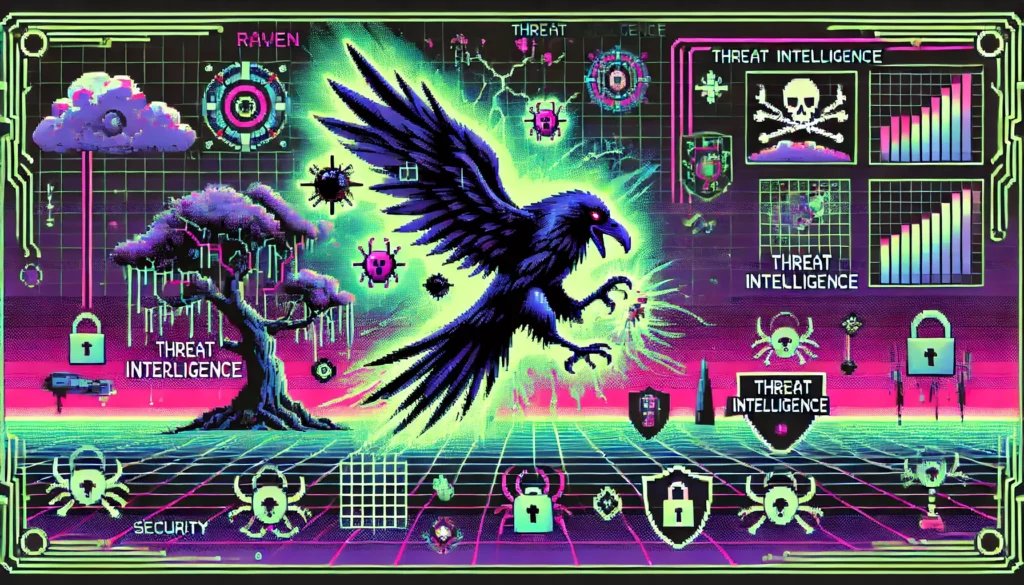What is a Threat Intelligence Platform?
A Threat Intelligence Platform (TIP) has become a crucial tool for organizations aiming to protect their digital assets. TIPs provide a centralized hub for collecting, analyzing, and sharing threat intelligence, enabling security teams to make informed decisions and take proactive measures against potential threats.

A Threat Intelligence Platform (TIP) has become a crucial tool for organizations aiming to protect their digital assets. TIPs provide a centralized hub for collecting, analyzing, and sharing threat intelligence, enabling security teams to make informed decisions and take proactive measures against potential threats.
The Role of Threat Intelligence
Threat intelligence helps organizations stay ahead of cybercriminals by providing insights into the tactics, techniques, and procedures (TTPs) used by attackers. By leveraging this information, organizations can strengthen their defenses, prioritize their response efforts, and mitigate potential risks before they escalate into full-blown security incidents.
Threat intelligence involves gathering information about current and emerging threats, analyzing this data to understand the risks, and disseminating the insights to relevant stakeholders. This intelligence can come from a variety of sources, including security vendors, open-source feeds, industry-specific communities, and even the dark web. The easiest way to track potential threats is with a narrative intelligence tool like Blackbird.AI that allows you to see across the dark web, social media networks, news sites, and more.
What is a Threat Intelligence Platform?
A Threat Intelligence Platform is a specialized software solution designed to aggregate, analyze, and disseminate threat intelligence across an organization. TIPs integrate data from multiple sources, enabling security teams to gain a comprehensive view of the threat landscape. By automating the collection and processing of threat data, TIPs help organizations respond more quickly and effectively to potential threats.
Key Features of a Threat Intelligence Platform
1. Data Collection and Aggregation
TIPs collect threat intelligence from various sources, including open-source feeds, commercial threat intelligence providers, and proprietary data. This data can be in different formats, such as STIX, JSON, or XML, and TIPs are equipped to handle this diversity.
The platform aggregates and normalizes the data, ensuring that it is ready for analysis. This process is essential for creating a unified view of the threat landscape, which is critical for effective decision-making.
2. Threat Analysis and Correlation
Once the data is collected, TIPs analyze it to identify patterns, correlations, and potential threats. This analysis can reveal the TTPs used by attackers, helping organizations understand the methods and motivations behind cyberattacks.
TIPs often use models like the Diamond Model of Intrusion Analysis or MITRE ATT&CK framework to map out the attacker’s behavior, providing deeper insights into the threat.
3. Automation and Workflow Management:
TIPs automate many aspects of threat intelligence management, from data collection to analysis and reporting. Automation reduces the manual workload on security teams, allowing them to focus on more strategic tasks.
The platform also integrates with other security tools, such as Security Information and Event Management (SIEM) systems, firewalls, and intrusion detection systems, enabling seamless workflows and quicker response times.
4. Contextualization and Enrichment:
A critical aspect of TIPs is the ability to enrich raw threat data with additional context. This includes information such as IP geolocation, domain registration details, and historical data on threat actors. Enrichment allows security teams to better understand the threat and take appropriate action.
5. Visualization and Reporting:
TIPs provide visualization tools that help security teams understand complex threat data. These tools can display relationships between different threat indicators, making it easier to identify trends and anomalies.
The platform also generates reports tailored to different audiences within the organization, from technical teams to executive management, ensuring that the right information reaches the right people.
6. Collaboration and Sharing:
One of the significant advantages of TIPs is their ability to facilitate collaboration within and outside the organization. Security teams can share threat intelligence with trusted partners, industry groups, and government agencies, enhancing collective defense efforts.
TIPs support Information Sharing and Analysis Centers (ISACs) and other community-driven initiatives, allowing organizations to contribute to and benefit from a broader pool of threat intelligence.
The Threat Intelligence Lifecycle
The effectiveness of a TIP is often measured by how well it supports the threat intelligence lifecycle. This lifecycle includes the following stages:
1. Requirements
Organizations begin by defining their threat intelligence needs, identifying the types of threats they are most concerned about, and determining the desired outcomes. This stage sets the foundation for the entire process.
2. Collection
TIPs gather raw data from a wide range of sources. This stage involves collecting information on threat actors, malware, vulnerabilities, and other relevant data points.
3. Processing
The raw data is then processed into a format that can be analyzed. This step may involve decryption, data translation, and organizing data into structured formats.
4. Analysis
In this stage, the processed data is transformed into actionable intelligence. TIPs analyze the data to identify trends, anomalies, and potential threats, which are then used to inform decision-making.
5. Dissemination
The insights gained from the analysis are shared with relevant stakeholders. TIPs ensure that the information is tailored to the audience, whether it’s technical teams or executive leadership.
6. Feedback
Finally, the intelligence process is iterative, with feedback from stakeholders used to refine the threat intelligence approach. This continuous improvement ensures that the organization remains adaptive to the evolving threat landscape.
Benefits of a Threat Intelligence Platform
A cyberattack can happen at any time. Traditional threat intelligence and social listening tools are inadequate when it comes to detecting and analyzing the scope and impact of fast-moving narrative attacks. The adoption of a TIP offers several key benefits:
1. Improved Incident Response:
TIPs enhance the incident response process by providing timely and relevant intelligence. Security teams can prioritize their efforts based on the most significant threats, reducing the time to detect and respond to incidents.
2. Proactive Defense:
By understanding the tactics used by attackers, organizations can take proactive measures to defend against potential threats. This includes implementing controls to block known indicators of compromise (IOCs) and anticipating future attacks.
3. Enhanced Collaboration:
TIPs facilitate collaboration within the security team and across the broader cybersecurity community. Sharing intelligence with trusted partners allows organizations to benefit from collective knowledge and coordinate their defenses more effectively.
4. Cost Efficiency:
TIPs help organizations optimize their security investments by focusing on the most relevant threats. By reducing the noise and prioritizing actionable intelligence, organizations can allocate their resources more effectively.
5. Strategic Decision-Making:
With the insights provided by TIPs, executive management can make informed decisions about security strategy and resource allocation. This helps align security efforts with the organization’s overall business objectives.
Challenges and Considerations
While TIPs offer significant advantages, they also come with challenges that organizations need to consider.
1. Data Overload:
The vast amount of data collected by TIPs can be overwhelming. Organizations need to ensure that their TIP is capable of filtering out noise and focusing on the most critical threats.
2. Integration Complexity:
Integrating a TIP with existing security infrastructure can be complex. Organizations need to carefully plan the integration process to ensure that the TIP enhances, rather than complicates, their security operations.
3. Continuous Maintenance:
The threat landscape is constantly evolving, and TIPs require continuous maintenance and updates to stay effective. Organizations need to invest in ongoing management and support to keep their TIP up to date.
Prevent Narrative Attacks with the Leading Narrative Intelligence Tool
A Threat Intelligence Platform is a powerful tool that can significantly enhance an organization’s cybersecurity posture. By centralizing the collection, analysis, and dissemination of threat intelligence, TIPs enable security teams to make more informed decisions, respond more quickly to threats, and collaborate more effectively with other stakeholders.As cyber threats continue to evolve, the role of narrative intelligence tools in defending against these threats will only become more critical. Organizations that invest in the Blackbird.AI narrative intelligence tool benefit from AI-based technology needed to face their greatest threats. See a demo today.
Need help protecting your organization?
Book a demo today to learn more about Blackbird.AI.



